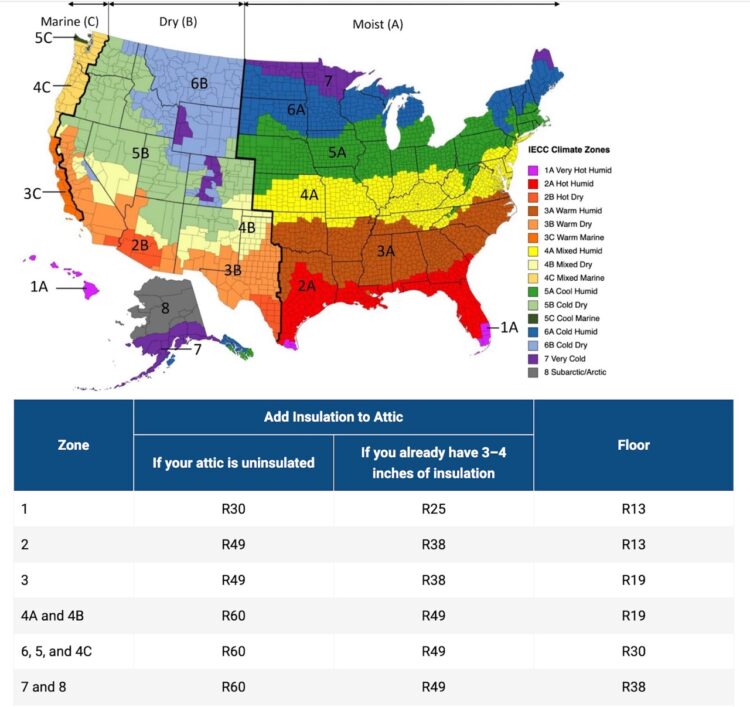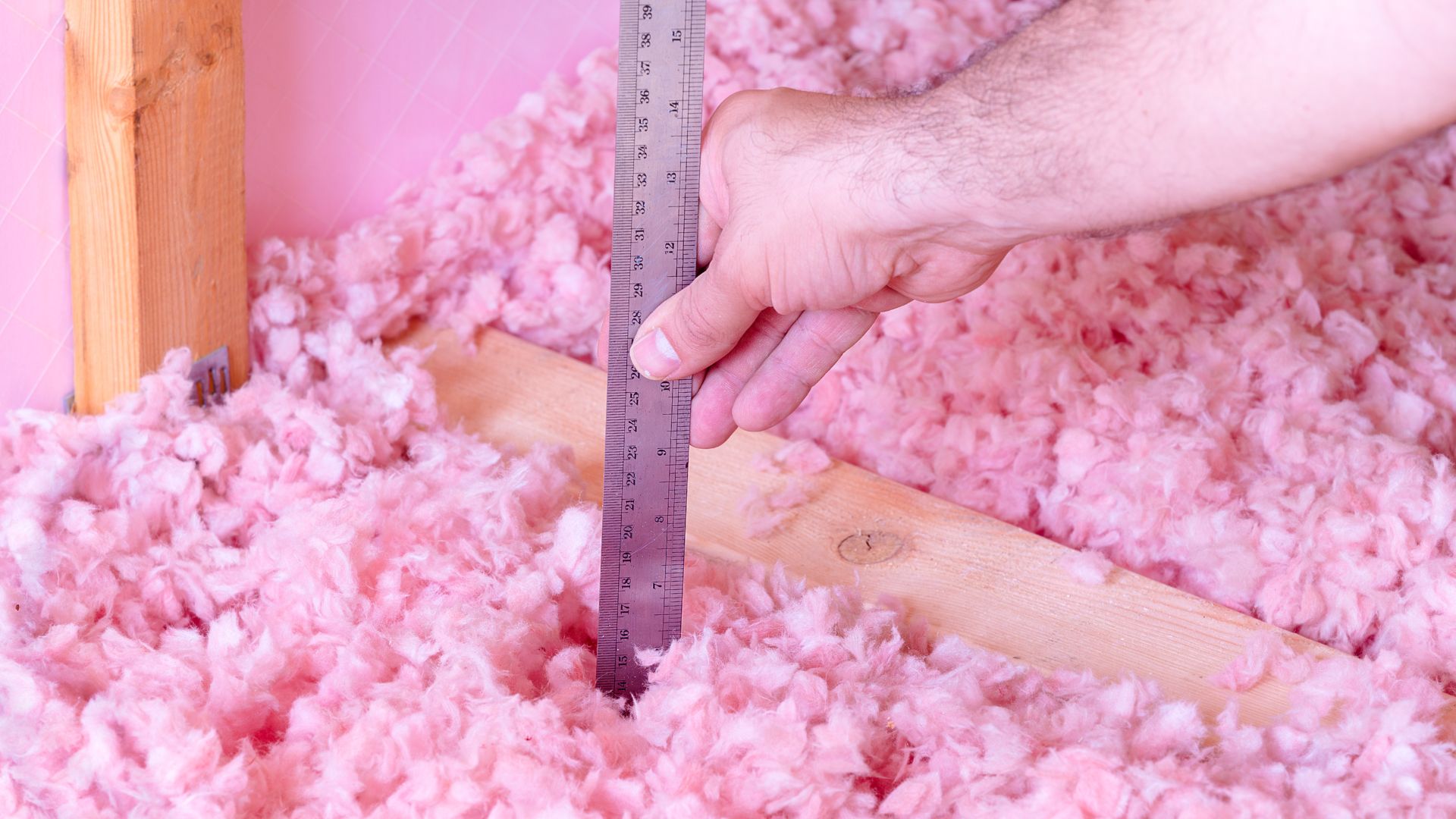
Improve the Comfort of Your Home Starting in Your Attic
Ever popped your head into your attic in July and felt like you just opened the door to a blast furnace? You’re not alone. Whether you’re using it for storage or if it’s just home to ducting, wiring, and a lot (or little bit) of insulation, your attic plays a big role in your home’s overall comfort and energy efficiency.
At Presidential Exteriors, we know that homeowners want more than just a quick fix. You want real solutions that last, backed by expertise you can trust. That’s why we’re breaking down everything you need to know about hot attics—what causes them, why they can be a problem, and most importantly, what you can do to keep yourself more comfortable, your energy bills lower, and to help your home last longer.
Ideal Attic Temperatures: What’s Normal and What’s Too Hot?
So how hot is too hot when it comes to your attic? While it’s normal for your attic to be warmer than the rest of your home, there’s a difference between “warm” and “why is it 130 degrees up here?”
Recommended Attic Temperatures by Season
A properly ventilated attic should only be about 10–20 degrees warmer than the outside temperature. Here’s a quick breakdown of what that should look like:
- Summer: Outdoor temps in the 90s? Your attic shouldn’t exceed 110–120°F. Any higher, and you’re dealing with excessive heat buildup.
- Winter: Your attic should stay close to the outdoor temp—within a few degrees. This helps prevent ice dams and condensation, which can cause moisture damage.
Signs Your Attic Is Too Hot
Not ready to crawl up there with a thermometer? No worries—your home will usually send up a few distress signals if the attic’s overheating:
- Sky-high energy bills – Your AC is likely working overtime as your cool air seeps up, and that stifling heat bleeds down.
- Uneven temperatures in your home – That one upstairs room that’s always too warm? That heat is almost certainly coming from the attic above.
- Roof issues – Warping, curling shingles, or sometimes even bumps in the roof can come from the damage caused by plywood or other materials being exposed to extreme heat.
- Musty odors or mold – Trapped heat + humidity = a perfect storm for moisture issues.
- HVAC struggles – If that air needs to be 70 degrees by the time it comes out of your vents, and it’s piping through a 140-degree attic, your mechanicals are probably working double time.
Causes of Hot Attics: What’s Turning Up the Heat?
Now that we know your attic shouldn’t feel like a desert in August, let’s talk about what’s actually causing all that heat to build up in the first place.
1. Inadequate Ventilation
Your attic has to be able to breathe. Without proper airflow, hot air gets trapped and temperatures rise— fast.
A well-ventilated attic should have both intake vents (like soffit vents) and exhaust vents (like ridge or gable vents) to allow a steady exchange of air. Without it? Your attic just becomes an oversized oven.
Think about your car sitting in the sun on a boiling July day. The heat gets trapped inside, building up as the day goes on. Having a ridge vent is the vehicular equivalent of leaving the windows or sunroof cracked, so that the hot air can rise up and out. A single vent can’t fully solve that problem, though.
You remember when you were a kid and you’d stick your straw in your drink, cover the top of the straw with your finger, and giggle in fascination when the water or soda wouldn’t come out until you let go of the top? Well, as an adult, you know that is because of pressure. Your attic is experiencing the same thing. Without an intake to relieve the air pressure, that hot air trying to get out through the ridge can actually create a negative pressure in the attic. That means that your attic is literally sucking the air out of your house through gaps and cracks in your drywall, top plates and penetrations, to exhaust.
Solution: Installing a balanced system of intake and exhaust vents. This ensures hot, moist air can rise out through the top, and cool, fresh, dry air can be sucked in from the bottom. Keeping your attic in equilibrium even when it’s scorching outside.
2. Poor or Old Insulation
Insulation doesn’t stop the transfer of heat; it just slows it down. The higher the R-value of your insulation, the slower heat passes through. If your attic insulation is thin, damaged, or outdated, heat pushes right through. Over time, insulation can even settle or degrade—so even if you had enough at one point, it may not be doing the job anymore. For our region, Energy Star actually recommends R60 insulation in your attic.

With most insulation coming in between R3 and R4 per inch, that means almost 20” of insulation on the floor of your attic.
If you imagine two identical houses, House A and House B, both with attics sitting at 130 degrees, however house A has a fully Air Sealed attic and 20” of insulation, and House B with no air sealing, and only 4” of insulation, it isn’t hard to imagine how much more of that attic heat is going to seep down into the living space in House B.

The same is true in reverse during winter. It’s easy to imagine how much of your precious heated air is climbing right out through the ceiling in home B!
Solution: Air seal and upgrade your attic insulation to effectively block heat year-round.
3. Roofing Material and Color
Studies have shown that shingle color can dramatically impact the surface temperature of roof decking, with some studies showing that a black shingle can result in a roof deck that is 30-50 degrees hotter than a light or white shingle. There are other factors at play too, though, like underlayments, direct sun exposure, etc. More importantly, other reputable studies have shown that when an attic is properly vented and insulated, those dark shingle colors only result in a 2-4 degree difference in the temperature inside the attic, and almost no impact on the temperature of living spaces.
Solution: Pick whatever shingle color you like, but make sure your attic is engineered properly!
4. Blocked or Improper Vent Placement
You might technically have vents, but are they doing anything? Blocked soffits (from insulation or debris) or poorly positioned vents can lead to stagnant air and poor circulation.
Not every home is built with optimal attic airflow in mind. Complex rooflines, tight attic spaces, or minimal overhangs can all make proper ventilation and insulation more difficult.
Solution: Clearing blocked vents and repositioning or adding ventilation promotes continuous airflow throughout your attic.
Keep Your Home Cool and Energy Efficient with Presidential Exteriors
When it comes to fixing a hot attic, a professional inspection can make all the difference. At Presidential Exteriors, our certified experts specialize in attic insulation upgrades, ventilation improvements, and air sealing to ensure your attic performs at its best.
We’re dedicated to providing reliable, customer-focused service that delivers lasting results—so you can enjoy a cooler, more energy-efficient home. Ready to beat the heat? Explore our services and discover how we can transform your attic today.